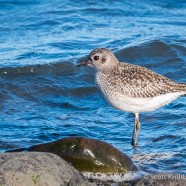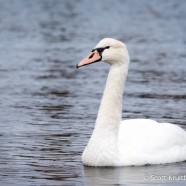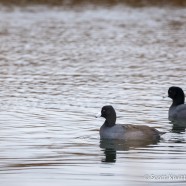February Arrives
The transition from January into February is usually one without many colors, though this sunset on the final night of January was spectacular over the water. The pink glow from the sun below the horizon makes me think of everything from Valentine’s Day to the Northern Cardinal males beginning to sing in our yards on the warm and sunny days as they stake out their territories and sound out for mates, if they do not already have one. The same shade reminds me of the House Finch males that have also been calling out their cheery melodies frequently as of late. This January seemed to move...
Read MoreLong-tailed Ducks
These Long-tailed Ducks are showing off some unexpected camouflage on a cloudy day, their black and white plumage matching the patterns of water while on the surface. This species of diving duck certainly spends a long time underwater when it is feeding, and they can even go down to near 200 feet! You never realize how much these birds look like waves until you watch them bobbing up and down on a lake or the sea.
Read MoreJanuary Black-bellied Plover
This Black-bellied Plover (Pluvialis squatarola) is one of several that have been hanging out around the Stratford Point area all winter. The species can overwinter in Connecticut if the season is cooperative enough without ice, snow and frigid temperatures making foraging and surviving more difficult, and so far we have been treating them relatively well. While it has been a chilly week we have only had a trace of snow, and the daytime temperatures still climb to above freezing. In only two months dozens of our volunteer monitors will be hitting the field for the beginning of the Audubon...
Read MoreMute Swan
They may be a non-native and invasive species, sometimes harmful to our native waterfowl, but one has to still appreciate the beauty of the Mute Swan on a winter day when they are trying to survive like everything else.
Read MoreAmerican Coots
A species such as these American Coot (Fulica americana) entered January finally having to find some open water as the freezing line has penetrated regions like Chautauqua County, quickly locking up the open water of small ponds and waterways. While Lake Erie can still provide a comfortable spot for many waterfowl this winter others will migrate south to the Atlantic Coast and warmer shoreline quarters. These American Coots are actually in the rail family and more closely related to Sandhill Cranes than their duck friends, and if you have ever seen their legs and feet out of the water then...
Read More








